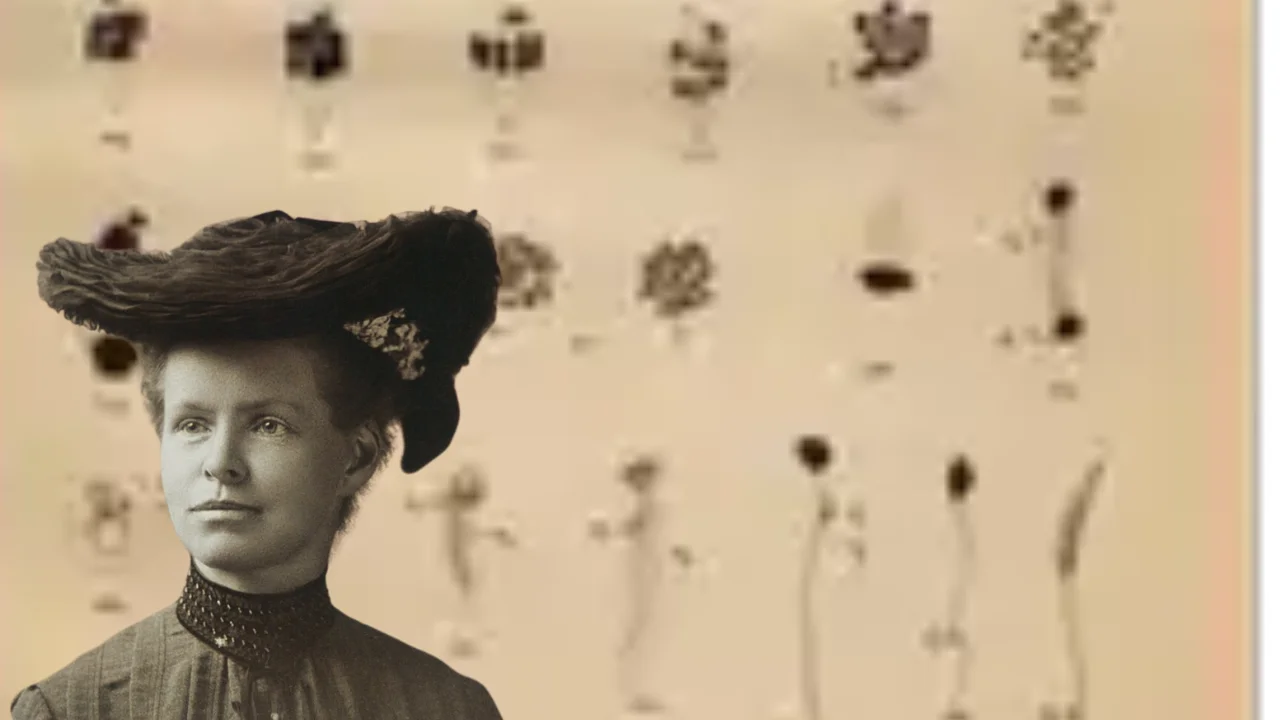Nettie Stevens’ Story: Passion, Humility & Persistence
09 Mar 2025
Featured

In the realm of scientific discovery, few stories shine as brightly yet remain as underappreciated as that of Nettie Stevens. A pioneer in genetics, she made one of the most significant breakthroughs in biology: the discovery of sex chromosomes.
Her work laid the foundation for understanding how gender is determined at a chromosomal level. Despite the immense value of her contributions, she did not receive the recognition she deserved during her lifetime.
[embed]https://youtu.be/uVrcphe44u4[/embed]
Nettie Stevens' journey is a tale of relentless passion, humility, and persistence—a testament to the power of dedication in the pursuit of knowledge.
A Brilliant Mind from Humble Beginnings
Nettie Maria Stevens was born on July 7, 1861, in Cavendish, Vermont, to a working-class family. From an early age, she displayed an insatiable curiosity and a deep love for learning.
Unlike many girls of her time who were steered away from formal education, Stevens was determined to pursue her academic dreams.

Nettie_Stevens[/caption]
She excelled in school and later attended Westford Academy, one of the few institutions at the time that allowed girls to receive an advanced education. After years of teaching to support herself, she enrolled at Stanford University, where she earned both her bachelor's and master’s degrees in biology.
Her thirst for knowledge didn’t stop there—she went on to pursue her Ph.D. at Bryn Mawr College, where she was mentored by leading biologists and developed her keen interest in cytology (the study of cells).
Lessons: Passion Fuels Success -Nettie Stevens pursued science with relentless passion, despite societal barriers for women in academia. Her love for discovery kept her going, proving that genuine enthusiasm for one’s work leads to groundbreaking achievements.
A Trailblazer in Genetic Research
Stevens' career truly flourished after earning her Ph.D. in 1903. She secured a research position at Bryn Mawr College, where she conducted groundbreaking studies in genetics.
At a time when the understanding of heredity was still developing, Stevens meticulously studied insect cells under the microscope.
Her most significant work came when she observed differences in the chromosomes of mealworms, leading to the conclusion that sex determination was linked to a pair of specific chromosomes—what we now call the X and Y chromosomes.
Her discovery, published in 1905, was revolutionary. It directly challenged prevailing theories of sex determination and provided concrete evidence that biological sex is determined at conception by chromosomal differences, not environmental factors or inheritance of blended traits.
Though her findings were monumental, they were often overshadowed by the work of her contemporary, Edmund Beecher Wilson, and the dominant influence of male scientists of her era.
“…we find that the evidence is overwhelmingly on the side of the view that sex is determined in the egg; but to the question of how sex is determined in the egg, no thoroughly convincing answer has yet been given.” –Nettie Stevens
Despite her remarkable contributions, Stevens struggled to gain permanent academic positions. She continued her research tirelessly, publishing extensively on various aspects of genetics and cell biology, driven by her unwavering commitment to science.
Lesson: Persistence Overcomes Barriers - She faced gender-based discrimination and struggled to gain permanent academic positions, yet she remained committed to her research. Her story teaches us that perseverance, even in the face of adversity, can lead to lasting impact.
The Unrecognized Genius Who Changed Science
Stevens' work fundamentally changed our understanding of genetics, yet she did not receive the widespread recognition she deserved during her lifetime.
While her contemporary Wilson confirmed her findings, it was Thomas Hunt Morgan, a renowned geneticist, who received much of the credit for advancing chromosome theory.
Although she was not awarded the prestige or institutional recognition that her male counterparts enjoyed, her legacy lives on in the scientific community.
Today, her contributions are widely acknowledged, and she is celebrated as one of the key figures in the history of genetics.
In 1994, she was posthumously inducted into the National Women’s Hall of Fame, a long-overdue acknowledgment of her pioneering work.
Lesson: Humility and Dedication Matter More Than Recognition -Despite making a revolutionary discovery, Stevens did not receive the recognition she deserved in her lifetime. However, she remained focused on her work rather than fame. Her legacy reminds us that true success is about making a meaningful contribution rather than seeking immediate acknowledgment.
A Life Devoted to Discovery
Stevens’ life was one of quiet determination. She never married and remained fully dedicated to her research.

Nettie Stevens[/caption]
In a time when women were largely excluded from scientific academia, she navigated significant gender-based barriers with resilience.
She financed much of her education through teaching and scholarships, proving that persistence could overcome societal limitations.
Her life, however, was tragically short. In 1912, at the age of 50, she succumbed to breast cancer, cutting short a career that had only begun to reach its full potential. Had she lived longer, there is no doubt that her influence on the field of genetics would have been even greater.
The Enduring Impact of Her Legacy
Nettie Stevens' story is one of unwavering passion, humility, and persistence. She pursued science not for fame or fortune, but for the love of discovery. Though she was often overlooked in her time, her work laid the foundation for some of the most fundamental concepts in genetics today.
Her story serves as a reminder of the importance of recognizing and celebrating the contributions of all scientists, regardless of gender.
More than a century after her groundbreaking discoveries, Stevens' legacy continues to inspire future generations of scientists to persevere against the odds and follow their passion for knowledge.
Reference
Tags
Women
Inventor
Latest Posts
Tags
- Women27
- Scientist9
- Author6
- Inventor3
- Nobel3
- Singer3
- Actor2
- Activist2
- Physicist2




